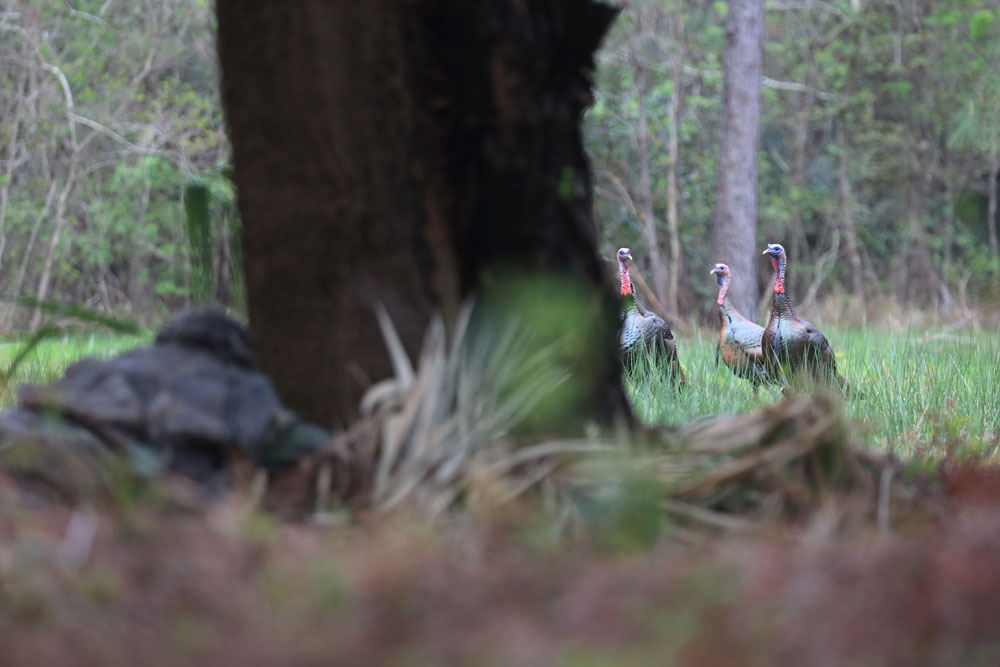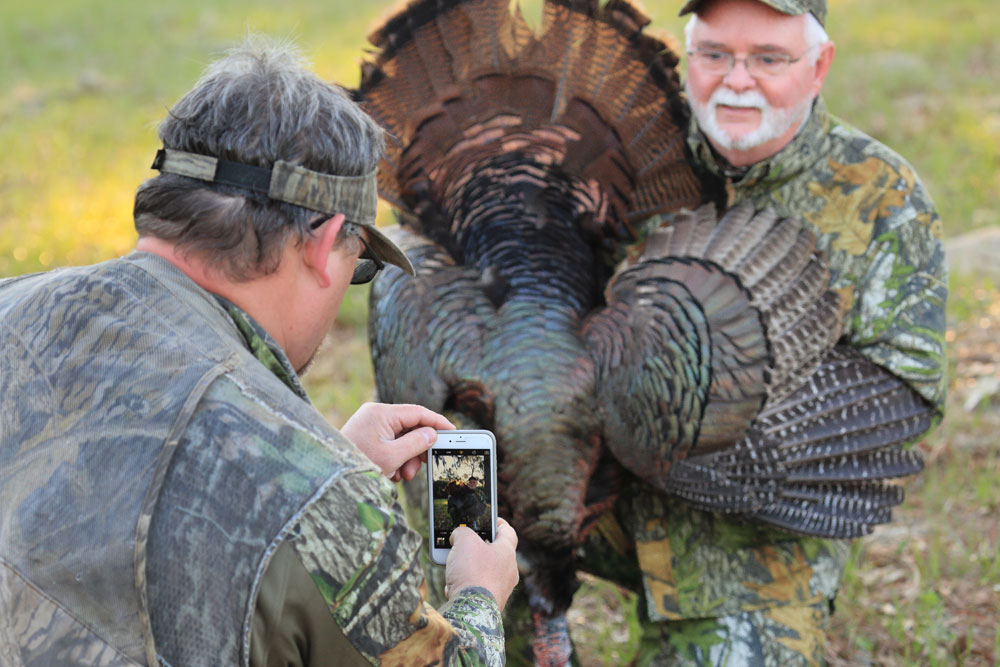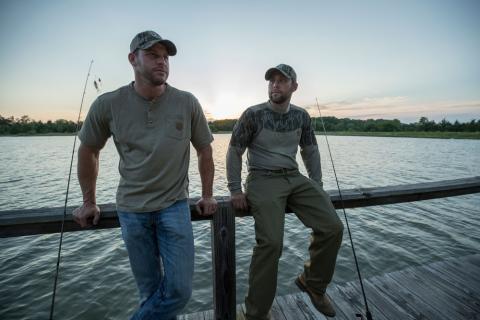provided by John Phillips
Osceola turkeys are a subspecies of the eastern wild turkey. The Osceola turkey got its name from Chief Osceola of the Seminole Indian nation. Today about 100,000 wary and hard-to-hunt Osceolas live in central and south Florida, primarily south of Orlando. Most Osceolas live on about 20 public Wildlife Management Areas (WMAs) with some on private lands. One of the men who knows the Osceola best is Keith Kelly, the manager of the Dee-Dot Timberlands, 25,000 acres of timberland near Jacksonville, used exclusively for family, friends and charity turkey hunts.

As I’ve mentioned earlier, when the Osceola gobbler leaves his roost tree, he’ll either usually fly down to the oak hammock closest to where he’s roosted or to a field closest to that oak hammock. We hunt south Florida farms at the beginning of turkey season - primarily for Wounded Warriors, many of whom are in wheelchairs. We provide the guides to help these American heroes turkey hunt. We started these hunts many years ago as a part of Mossy Oak’s “Turkey Thugs TV Show.” Back then, the Turkey Thugs, made up of some of the best turkey hunters and turkey callers in the nation, gave up that first week of the Florida season to come and guide for the vets. The Turkey Thugs historically who guided for this program were Ronnie “Cuz” Strickland, Greg Briggs, Bubba Bruce and myself. Historically, the season came in on a Friday, and we all met at one of these ranches by noon on Thursday.
I’m a strong proponent of scouting and pinpointing the turkey you want to hunt before you hunt him. Each of the guides gets in his vehicle and starts driving around the property where he’ll be guiding, looking for turkeys out in the fields until dark. Using binoculars, we can see the turkeys out in the fields and on the fields’ edges. Then the guides know the places where the turkeys seem to be holding. On Friday morning, before turkey season opens, we all go to different areas of these two farms and listen to turkeys gobble before daylight. Once we hear the turkeys gobbling, we’ll wear full Mossy Oak camouflage and try to move in close to where the turkeys are gobbling. We want to see where those gobblers fly to when they leave their roost trees. We don’t get close to them - we just try to get to where we can see the birds when they pitch out of the trees. We will stay in the woods, invisible in our Mossy Oak camo, to learn what the birds are doing, and where they’re going when they hit the ground.

We’ll return to the lodge and eat a good breakfast. About noon on Friday, we’ll go to the regions where we’ve seen the turkeys and build blinds. Many of our hunters will be in wheelchairs, so we have to build our blinds to get in close to the blinds before daylight in a golf cart with the hunter’s wheelchair. Next we help the hunter get out of the golf cart and into his chair, and roll him in to the blind. We build our blinds quickly out of palmitas fronds (palm fronds) and cabbage palms in which two hunters can sit. We build the blinds about 100-200 yards from the turkey’s roost tree. We’ve got to come in before sunrise, get the hunter out of the golf cart and into his wheelchair, and the guide must set up before the turkeys wake up. We also will put shooting sticks in the blinds for our hunters to rest their guns on, so as not to have to hold their guns until they see or hear a turkey coming. Since we’ve hunted these same farms for 6 or 7 years, the guides have a good idea as to what these turkeys will do and their historical movements patterns.



























